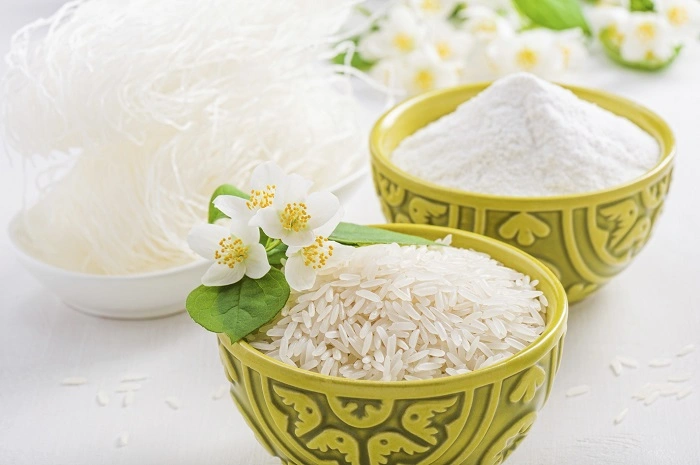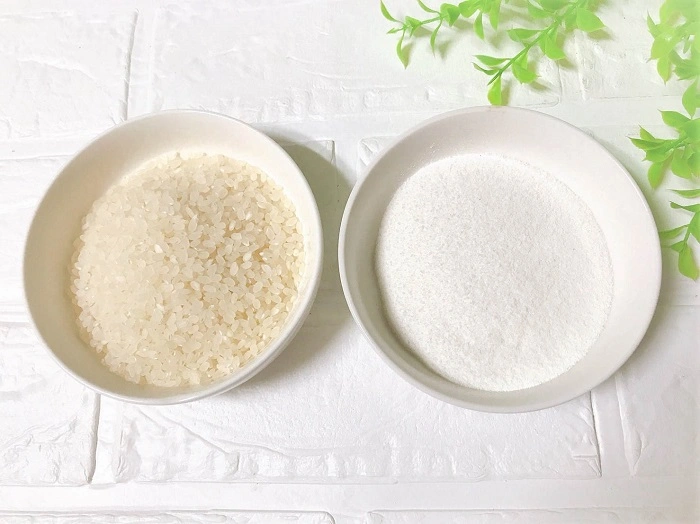Rice flour is a popular gluten-free ingredient used in baking, thickening sauces, and making crispy coatings. However, if you don’t have it on hand or need a different option, there are several substitutes that work just as well.
In this article, we’ll explore the best rice flour alternatives, their nutritional benefits, and how to use them effectively in different recipes.
Table of Contents
Why Replace Rice Flour?

You may need a substitute for rice flour due to:
- Gluten-Free Needs – Finding another gluten-free option with similar properties.
- Texture and Flavor Preferences – Some alternatives may provide a lighter or denser texture.
- Availability – Rice flour isn’t always stocked in every grocery store.
- Nutritional Differences – Looking for a flour with more fiber, protein, or vitamins.
Best Rice Flour Substitutes
Different substitutes work best depending on whether you are baking, frying, or thickening a sauce. Here are the top alternatives:
1. Almond Flour
Best for: Baking, gluten-free recipes, and low-carb cooking
- Made from ground almonds, this flour is naturally gluten-free and packed with healthy fats.
- Adds a nutty flavor and slightly denser texture.
- Use a 1:1 ratio when substituting, but expect a softer texture in baked goods.
2. Coconut Flour
Best for: Baking, pancakes, and thickening sauces
- Absorbs a lot of liquid, making it great for moisture-rich recipes.
- High in fiber and adds a slight sweetness to recipes.
- Use 1/4 cup of coconut flour for every 1 cup of rice flour, and increase liquid ingredients.
3. Tapioca Flour (Tapioca Starch)
Best for: Thickening sauces, frying, and gluten-free baking
- Light and starchy, perfect for creating a chewy texture in baked goods.
- Works well as a thickening agent in soups and sauces.
- Use 1:1 ratio in recipes that require rice flour.
4. Cornstarch
Best for: Thickening sauces, soups, and frying
- A great option for crispy coatings and thickening liquids.
- Lacks flavor, so it won’t alter the taste of your dish.
- Use a 1:1 ratio when replacing rice flour as a thickener.
5. Potato Starch
Best for: Thickening sauces, gluten-free baking, and frying
- Adds a light, fluffy texture to baked goods.
- Works well in frying as a crispy coating.
- Use a 1:1 ratio as a rice flour substitute.
6. Chickpea Flour (Gram Flour)
Best for: Baking, savory dishes, and binding agents
- High in protein and fiber, making it a nutritious alternative.
- Works well in savory dishes like pancakes and fritters.
- Use a 1:1 ratio, but expect a slightly stronger flavor.
7. Oat Flour
Best for: Baking, pancakes, and thickening sauces
- Adds a mild, slightly sweet taste and a soft texture to baked goods.
- Naturally gluten-free (if using certified gluten-free oats).
- Use a 1:1 ratio, but expect a softer, more tender final product.
8. All-Purpose Flour (If Not Gluten-Free)
Best for: Baking, thickening, and frying
- A simple and widely available substitute, though it contains gluten.
- Provides structure and elasticity in baked goods.
- Use a 1:1 ratio, but adjust liquids as needed.
9. Buckwheat Flour
Best for: Baking, pancakes, and gluten-free breads
- A nutritious alternative rich in fiber and antioxidants.
- Has a strong, earthy flavor, so it’s best mixed with other flours.
- Use a 1:1 ratio, but consider blending with a neutral-flavored flour.
10. Sorghum Flour
Best for: Gluten-free baking and thickening sauces
- High in protein and fiber, with a mild, slightly sweet flavor.
- Works well in breads, muffins, and pancakes.
- Use a 1:1 ratio, but combine with another gluten-free flour for better results.
Choosing the Right Substitute


Not all rice flour substitutes work the same way. Here’s a quick guide to choosing the best one for your needs:
| Substitute | Best Use | Notes |
| Almond Flour | Baking, gluten-free recipes | Adds a nutty flavor and moist texture |
| Coconut Flour | Baking, pancakes, thickening | Absorbs more liquid; use less than rice flour |
| Tapioca Flour | Thickening, frying, gluten-free baking | Adds chewiness and crispiness |
| Cornstarch | Thickening, frying | Neutral flavor; great for coatings |
| Potato Starch | Thickening, frying, gluten-free baking | Light texture; works well in blends |
| Chickpea Flour | Baking, savory dishes, binding | High in protein and has a distinct flavor |
| Oat Flour | Baking, pancakes, thickening | Soft texture, slightly sweet taste |
| All-Purpose Flour | Baking, thickening, frying | Not gluten-free but works well in most recipes |
| Buckwheat Flour | Baking, pancakes, bread | Strong flavor, best mixed with other flours |
| Sorghum Flour | Gluten-free baking, thickening | Mild taste, best blended with other flours |
FAQs
What is the best rice flour substitute for frying?
Tapioca flour, cornstarch, and potato starch all create a crispy coating, making them ideal for frying.
Can I substitute rice flour with all-purpose flour?
Yes, but it contains gluten. Use a 1:1 ratio, and adjust liquid ingredients as needed.
What is the best gluten-free substitute for rice flour in baking?
Oat flour, almond flour, or a mix of tapioca flour and potato starch work well for gluten-free baking.
Can I use coconut flour instead of rice flour?
Yes, but since coconut flour absorbs more liquid, use only 1/4 cup for every 1 cup of rice flour and increase liquid ingredients.
What’s the best rice flour substitute for thickening sauces?
Cornstarch, tapioca flour, and potato starch all work as great thickening agents.
Whether you’re baking, frying, or thickening a sauce, there are plenty of rice flour substitutes available. From gluten-free options like oat flour and tapioca starch to all-purpose flour for those without dietary restrictions, the right choice depends on the dish you’re making. Experiment with these substitutes to find the perfect match for your recipes.

